Creating a Haven of Sustainability: Your Comprehensive Guide to Setting Up a Low-Waste Nursery
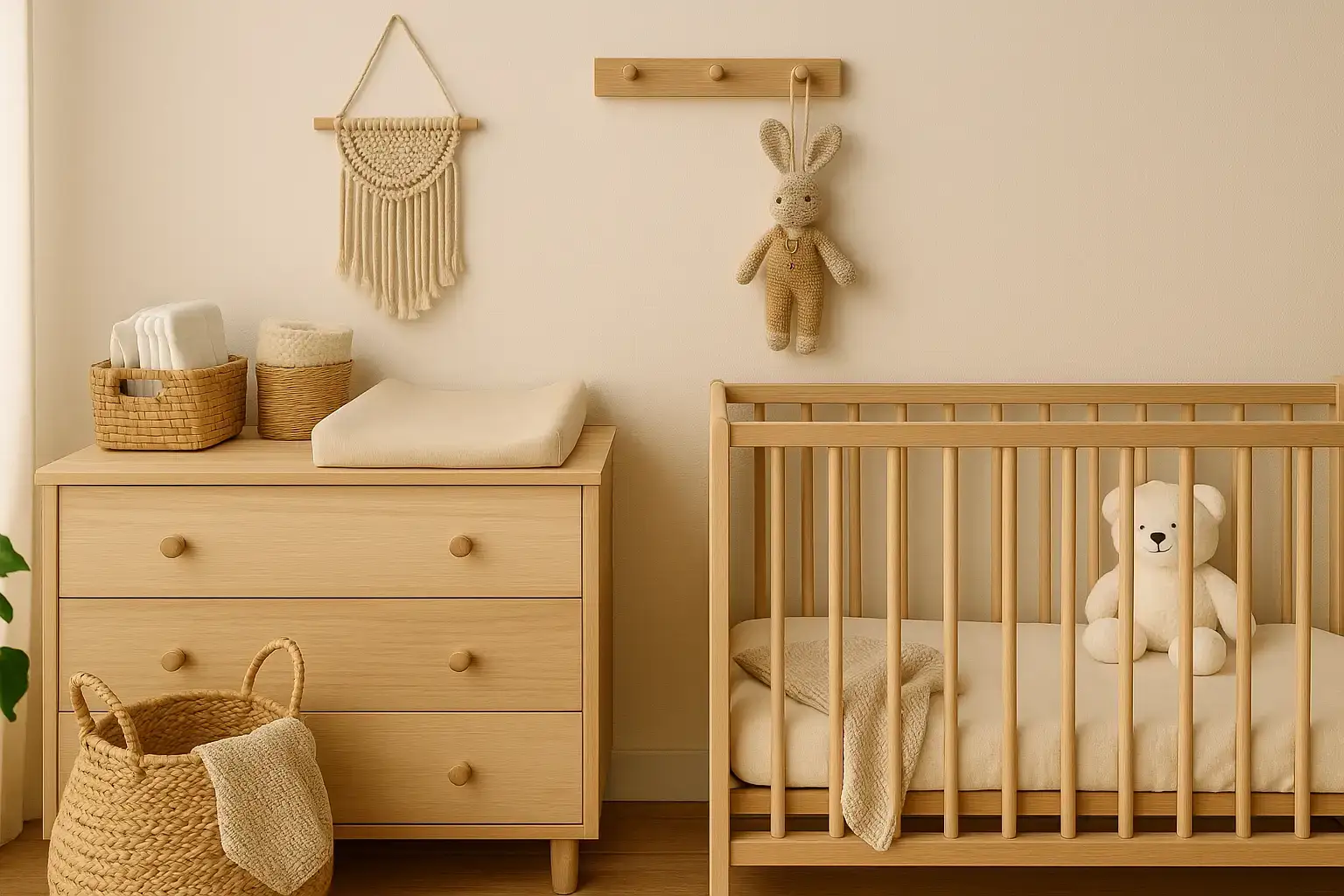
The arrival of a new baby is a momentous occasion, filled with anticipation, love, and the desire to create the perfect nurturing environment. As expectant parents prepare the nursery, the focus often centers on comfort, safety, and aesthetics. However, for the eco-conscious family, this is also an opportune time to weave in principles of sustainability, creating a low-waste haven that not only supports the baby's well-being but also minimizes their environmental footprint from the very beginning.
Setting up a low-waste nursery is about making mindful choices at every stage, from selecting furniture and textiles to stocking essentials and planning for the years ahead. It's about prioritizing quality over quantity, opting for natural and durable materials, embracing pre-loved items, and consciously minimizing single-use plastics and unnecessary packaging. This comprehensive exploration serves as your guide to creating a sustainable and nurturing space for your little one, offering valuable insights and actionable tips to encourage, guide, and inspire you on this rewarding journey of eco-conscious parenthood.
Laying the Sustainable Foundation: Choosing Furniture and Décor with Intention
The furniture and décor you select for the nursery will form the physical environment for your baby's early years. Opting for sustainable choices here can have a lasting impact.
- Prioritize Quality and Longevity: Instead of inexpensive, trend-driven pieces that may not withstand the test of time, invest in high-quality, durable furniture made from sustainable materials like solid wood (certified by the Forest Stewardship Council - FSC), bamboo, or recycled wood. Choose classic designs that can adapt as your child grows, reducing the need for frequent replacements. Consider convertible cribs that transition into toddler beds and beyond.
- Embrace Pre-Loved Treasures: The secondhand market is a goldmine for nursery furniture and décor. Explore consignment stores, thrift shops, online marketplaces, and hand-me-downs from friends and family. Gently used items often have plenty of life left and come with a smaller environmental footprint than new products, avoiding the energy and resources required for manufacturing and transportation. Plus, they often add a unique charm to the space.
- Opt for Natural and Non-Toxic Materials: Choose furniture and décor finished with non-toxic, water-based paints and finishes. Look for textiles made from organic cotton, linen, hemp, and wool, which are gentler on your baby's sensitive skin and grown without harmful pesticides and chemicals. Avoid synthetic fabrics that can release microplastics and opt for natural fiber rugs.
- Multi-Functional Pieces: Maximize space and minimize the number of items by choosing multi-functional furniture. A dresser that can also serve as a changing table with a removable topper, or a storage ottoman that doubles as seating, can reduce the overall footprint of the nursery.
- Sustainable Flooring: Consider eco-friendly flooring options like bamboo, cork, linoleum (made from natural materials), or reclaimed wood. Avoid vinyl flooring, which is made from PVC and can release harmful VOCs. Choose natural fiber rugs over synthetic ones.
Stocking Essentials Sustainably: Mindful Choices for Baby Care
The daily care of a newborn often involves a multitude of products. Making low-waste choices for these essentials can significantly reduce your environmental impact.
- The Great Diaper Debate (Revisited): As discussed previously, opting for reusable cloth diapers is one of the most impactful low-waste choices for a nursery. Explore the various types and find a system that works for your family. If cloth diapering isn't feasible full-time, consider using eco-friendly disposable diapers made with more sustainable materials and fewer harsh chemicals.
- Wipe Wisely: Instead of disposable baby wipes, consider using reusable cloth wipes made from soft fabrics like cotton flannel. You can moisten them with plain water or a gentle homemade solution. Store clean wipes in a container and soiled ones in a wet bag for washing. This simple swap significantly reduces waste and exposure to potentially irritating chemicals.
- Natural and Package-Free Toiletries: Choose natural baby shampoos, washes, and lotions that come in recyclable packaging or, even better, explore package-free options like solid shampoo bars and body butters. Look for brands that prioritize sustainable sourcing and minimal ingredients.
- Sustainable Swaddling and Bedding: Opt for swaddles and bedding made from organic cotton, bamboo, or other natural fibers. Choose blankets and sleep sacks that are durable and can be used for multiple children. Avoid synthetic materials that can release microplastics during washing.
- Wooden and Natural Toys: Select toys made from sustainably harvested wood, organic cotton, natural rubber, and other eco-friendly materials. Avoid plastic toys that can leach chemicals and contribute to plastic waste. Wooden toys are often more durable and can be passed down through generations.
Creating a Low-Waste Feeding Station
Feeding your baby, whether through breastfeeding or formula feeding, also presents opportunities for sustainable choices.
- Breastfeeding (If Possible): Breastfeeding is the most eco-friendly option, requiring no additional resources or packaging.
- Sustainable Formula Feeding: If formula feeding, choose brands that offer larger, recyclable containers to reduce packaging waste. Explore powdered formula over ready-to-feed options, as they typically have less packaging and a lower water footprint in transportation.
- Glass or Stainless Steel Bottles: Opt for glass or stainless steel baby bottles instead of plastic ones. These materials are more durable, easier to clean, and don't leach chemicals.
- Reusable Bibs and Burp Cloths: Choose bibs and burp cloths made from absorbent natural fabrics like organic cotton or bamboo. Avoid disposable options.
Minimizing Waste in the Long Run
Setting up a low-waste nursery is an ongoing process that extends beyond the initial setup.
- Embrace Hand-Me-Downs and Sharing: Accept hand-me-down clothing, toys, and gear from friends and family. Participate in local baby item swaps or online sharing groups.
- Buy Secondhand Clothing: Children grow quickly, and their clothing often has a short lifespan. Explore secondhand stores and online marketplaces for gently used baby clothes.
- Choose Quality Over Quantity: Resist the urge to buy every gadget and gizmo marketed for babies. Focus on essential, high-quality items that will truly be used.
- Repair and Repurpose: When items break, try to repair them instead of immediately discarding them. Get creative with repurposing items as your child grows. Old blankets can become play mats, and storage bins can find new uses.
- Plan for the Future: Consider how items can be reused or passed on as your child grows out of them. Choosing timeless designs and durable materials increases their potential for a second life.
Creating a low-waste nursery is a tangible expression of your commitment to a sustainable future for your child and the planet they will inherit. It’s about making conscious choices that prioritize natural materials, minimize waste, and embrace a more mindful approach to consumption from the very beginning of your baby's life. This thoughtful preparation not only creates a healthy and nurturing environment for your little one but also instills values of environmental responsibility that can last a lifetime.
Related Blogs

Unplug and Imagine: Choosing Battery-Free Toys for Engaging and Sustainable Playtime
Foster imagination and save energy with manual musical toys, story books, and nature play.
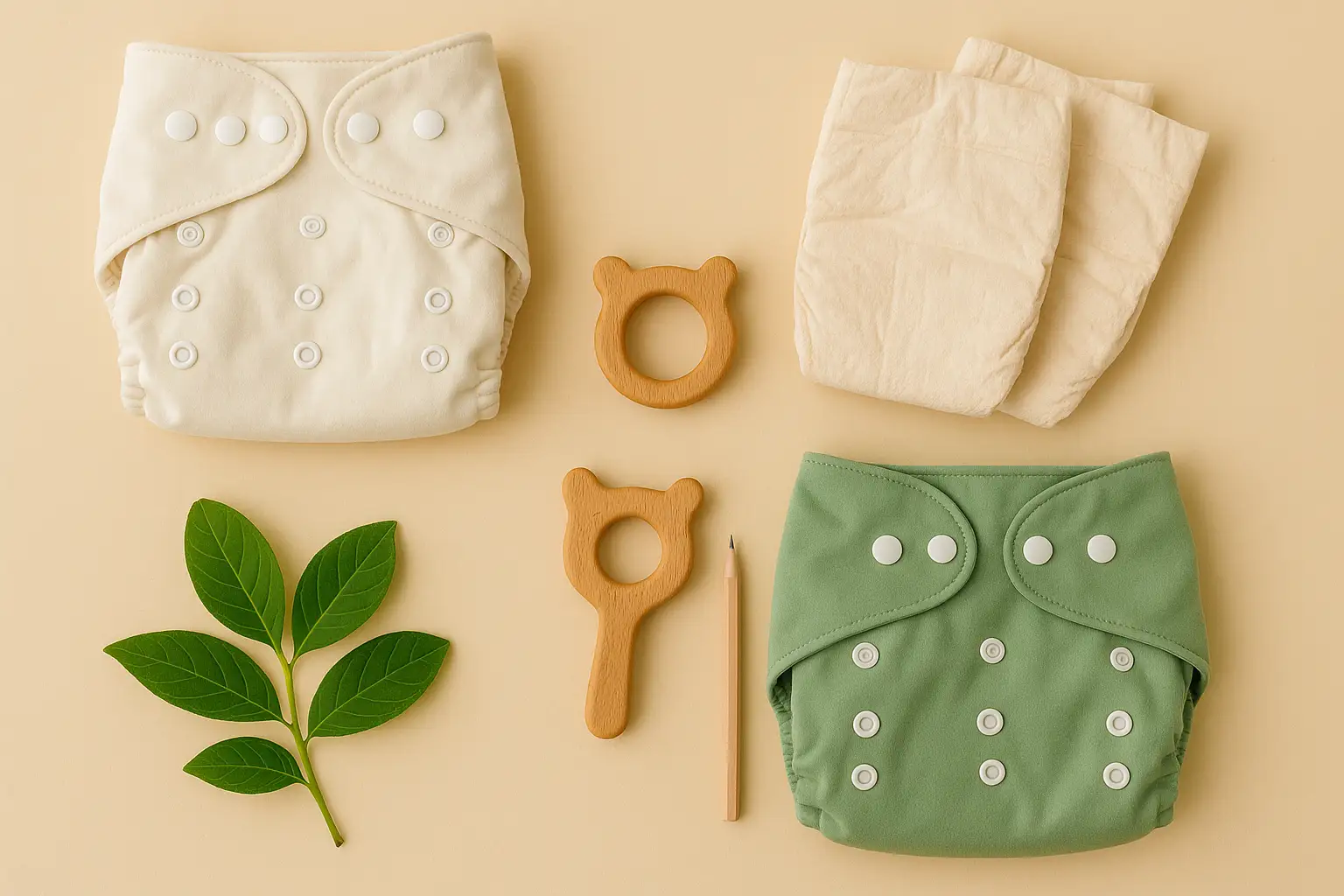
The Great Diaper Debate: Navigating Cloth vs. Eco-Disposables for a Sustainable Start
Comparison of sustainable alternatives to help you make informed decisions.
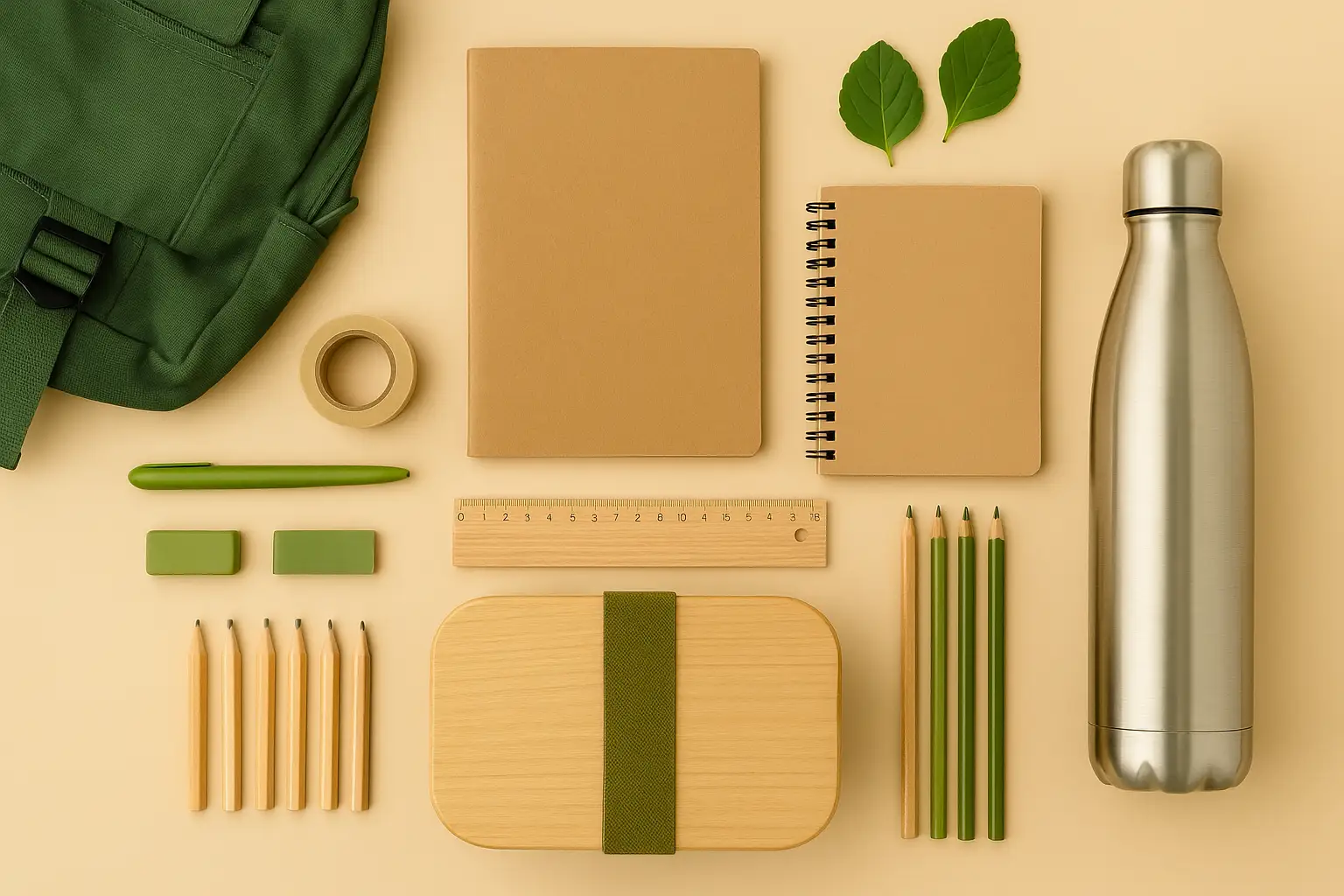
Equipping Young Minds, Protecting Our Planet: Sustainable School Supplies Kit
Insights on creating a sustainable school supplies kit in a sustainable way.
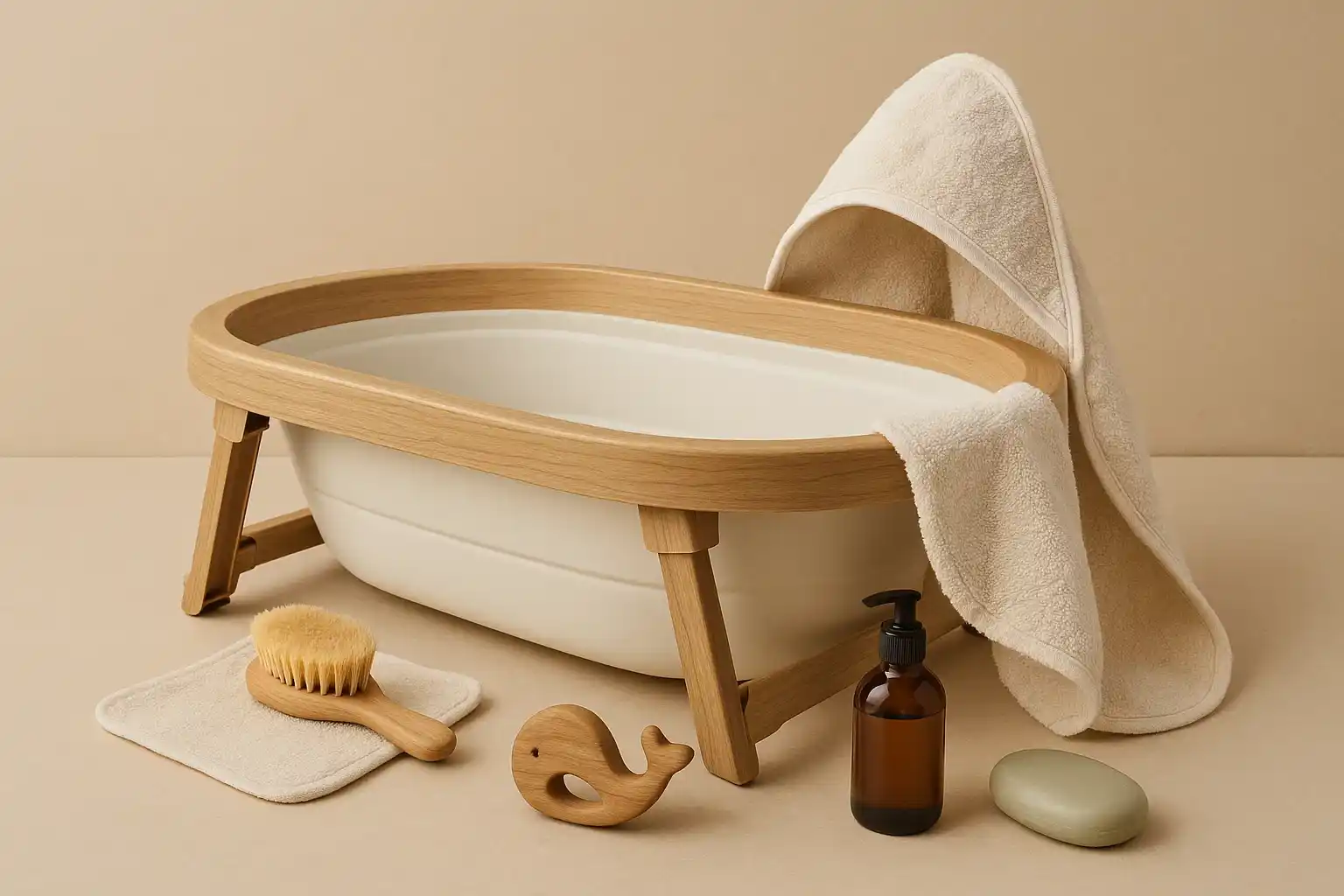
Bathtime, Simplified: Eco-Friendly Alternatives to Bulky Plastic Baby Baths
Reduce manufacturing impact and clutter with sink bath seats, inflatable tubs, or repurposed containers.

A Gentle Foundation: Choosing Eco-Friendly and Non-Toxic Changing Mats for Your Baby
Opt for organic cotton, cork-based, or recycled textile changing mats free from PVC and phthalates.
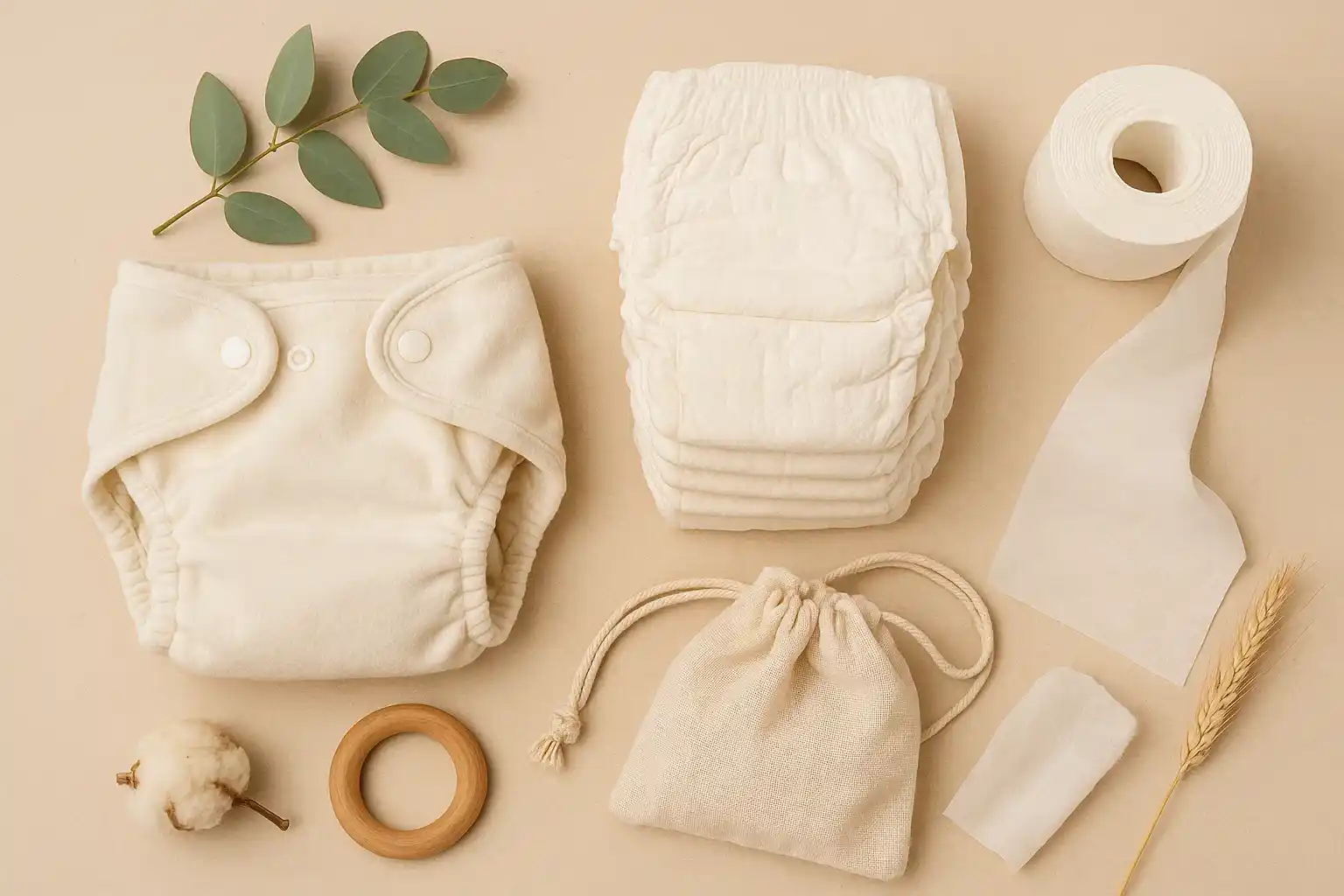
Diapering with Intention: Exploring Eco-Friendly Alternatives to Disposable Diapers
Cut down drastically on landfill waste with cloth, compostable, or hybrid diaper systems.
Stay in the Loop
Get tips and insights tailored to your interests — no spam, just sustainability.